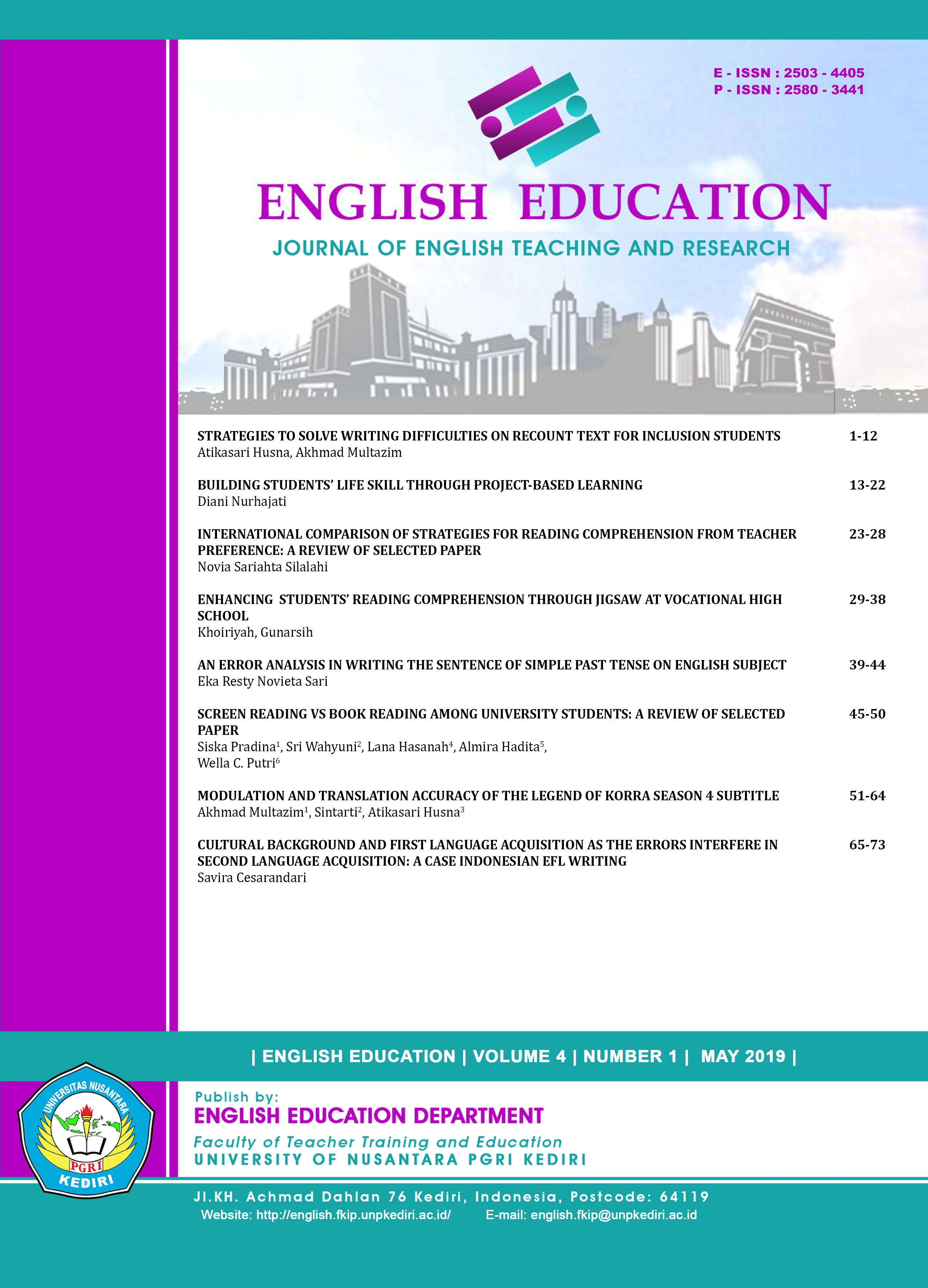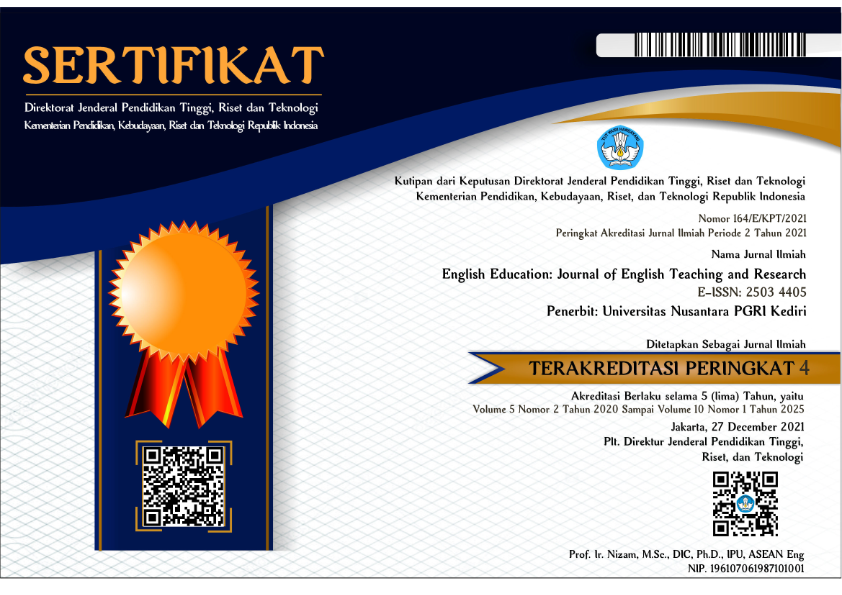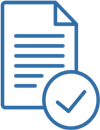A Enhancing Students' Reading Comprehension Through Jigsaw at Vocational High School
DOI:
https://doi.org/10.29407/jetar.v4i1.12965Abstract
The objective of this research is to increase students’ reading comprehension through jigsaw and to describe classroom situation when jigsaw is applied in teaching reading. Classroom action research was carried out through observasion, interview, test consisting of two cycles. 35 Multi Media students of tenth grade at SMKN 2 Kediri was assigned as participant. Analyses resulted that jigsaw could enhance the students’ reading comprehension and classroom situation. It can be seen that the students were eager, interested and motivated to participate in reading class. During teaching reading, the students showed more active than before and the class atmosphere seems more alive. Then, students’ reading achievement in cycle two improved than in cycle one. The students’ average score was higher from 71,85 in the first cycle to 79,85 in the second cycle.
Keywords: Reading Comprehension, Jigsaw, Vocational High School
Downloads
Downloads
Published
Issue
Section
License
Authors who publish with this journal agree to the following terms:
- Copyright on any article is retained by the author(s).
- The author grants the journal, the right of first publication with the work simultaneously licensed under a Creative Commons Attribution License that allows others to share the work with an acknowledgment of the work’s authorship and initial publication in this journal.
- Authors are able to enter into separate, additional contractual arrangements for the non-exclusive distribution of the journal’s published version of the work (e.g., post it to an institutional repository or publish it in a book), with an acknowledgment of its initial publication in this journal.
- Authors are permitted and encouraged to post their work online (e.g., in institutional repositories or on their website) prior to and during the submission process, as it can lead to productive exchanges, as well as earlier and greater citation of published work.
- The article and any associated published material is distributed under the Creative Commons Attribution-ShareAlike 4.0 International License








 Article template
Article template



